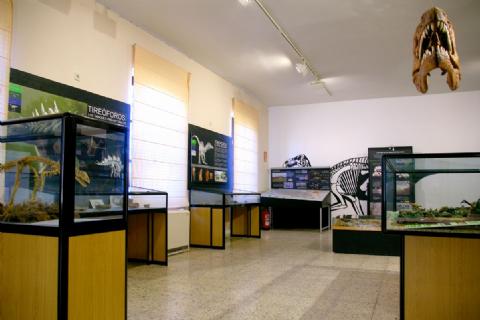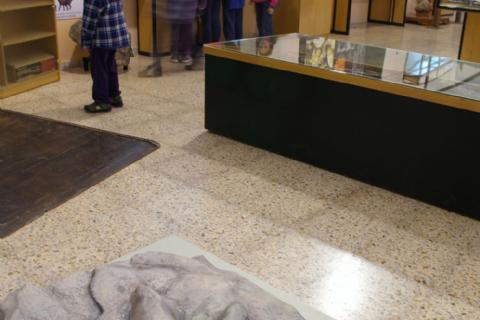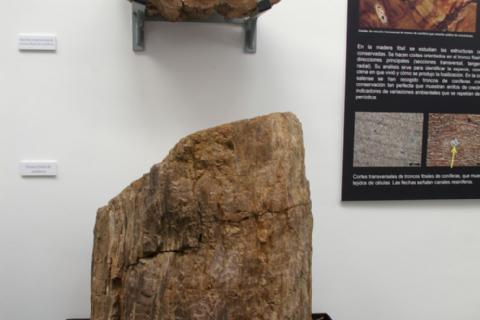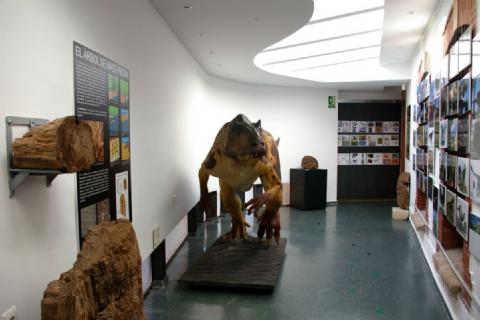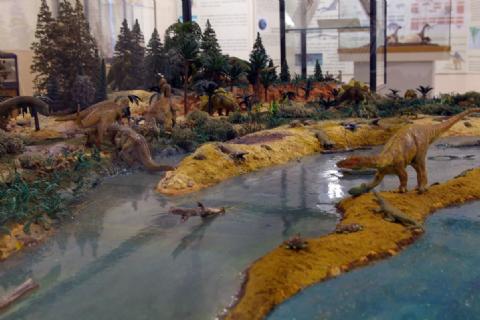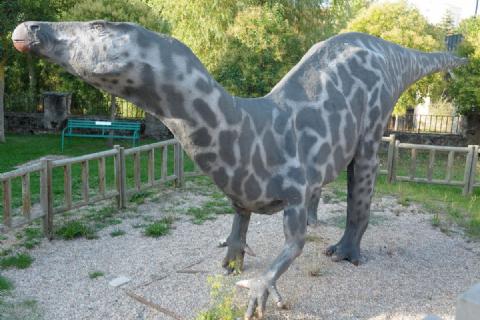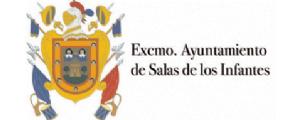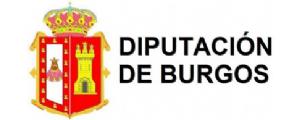Palaeontology Section
Most of the fossils on display here date from the early Cretaceous Period; that is to say from around 120 to 140 million years (m.y.) ago. There are also a few from the Jurassic Period (145 - 200 m.y.) and some from the end of the Cretaceous (65 m.y.) when the dinosaurs became extinct.
A realistic reproduction of an Allosaurid (a carnivorous, hunting dinosaur) introduces this exhibition. Petrified (turned to stone) plants illustrate the abundant subtropical vegetation that covered the countryside and provided food for vegetarian dinosaurs. Some specimens in this museum are unique in Iberia, such as arborescent ferns, trunks of Bennetitales (dwarf palms), trunks and cones of pine trees and perfectly preserved, microscopic pollen grains.
Moving into the main hall, we find illustrated explanations of the science of palaeontology – how fossils become preserved and how different types characterize rocks of different ages. Radioactively decaying elements also reveal age. Fossils and the type of rock they occur in allow construction of maps illustrating ancuent Earth geographies. As well as dinosaurs, remains of cocodriles, turtles, fish and snails that coexisted with them complete the list of Mesozoic (“middle animal”) fossils found to the southeast of Salas. Among the fish remains is a exemple of Lepidotes (ray-fin) with still-shiny, rhombic scales. There are also fossils (indirect fossils) such as the dinosaur footprints found at a dozen nearby localities.
Spectacular moulds of dinosaur feet (a world rarity) are present at the Costalomo outcrop, a few kilometres to the east. The museum of Salas contains one of the most varied collections of small dinosaurs. There is an exhibit of skeletal remains of small, agile plant-eaters, such as Hypsilophodontid. With slender body and limbs, this animal had a rigid tail with ossified tendons circling the caudal vertebrae, lending stability while running. There are teeth of a small plant-eating dinosaur not found anywhere else in Europe.
The museum displays some shells of dinosaur eggs. These are especially fragile fossils. One is practically entire and there are remains of a clutch of at least two eggs. They belong to the Titanosaurid sauropods that lived in the latest Cretaceous, shortly before the extinction of dinosaurs.
Sauropod remains are important - the giants of the Mesozoic Era. On display is a T-shaped metatarsal (foot bone) from a sauropod that measured more than 25 metres in length. Among the most important fossils are a Rebbachisaurid femur (thigh bone) 1.1 metres long, as well as ischia (hip bones), caudal (tail) vertebrae, ribs, skull fragments and teeth. These animals were abundant in Africa and South America but these local remains are exceptional in Europe. This particular specimen, Demandasaurus darwini, is unique in the world. Another notable fossil is the half complete skeleton of the turtle Chitracephalus domonii. Its shell is ornamented with peculiar geometric forms unknown from other turtles of the same age.
The museum has a workshop where fossil fragments are cleaned, pieced together and restored. The work is painstaking, employing a small pneumatic drill and requiring an eye for puzzles. Lack of space requires that some specimens remain in store. Many await restoration. And, doubtless, many more await discovery in the surrounding countryside.




